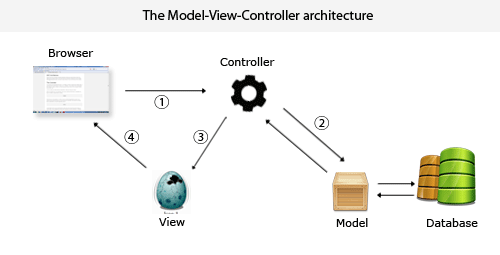DPSE GUI subsystem development review
Contents
- Intro
- 1. Topic relevance
- 2. Goals of development
- 3. Research and development state review
- 4. DPSE GUI subsystem development
- 4.1 Distributed parallel simulation environment (DPSE) description
- 4.2 DPSE decomposition
- 4.3 GUI as part of DPSE
- Conclusion
- References
Intro
Simulation is nowasays obligatory by development and/or verification of any big projeect in every branch of science or industry. This is reasoned by growing of real experiments difficulty — with project upscaling time and cost grow drammatically due to difficulty. [1]
The most widespread kind of simulation today is computer simulation. This means investigation of objects' properties and behaviour using preprogrammed matematical models of real objects. The advantage of computer simulation is high speed, less cost comparing to natural experiments, possibility to reuse models. The disadvantage of computer simulation is speed limit — CPU can perform only finite number of operations per second.
The solution is using of concurrent (parallel) computer systems. Distribution of computations on many computantional resources is called parallelization. One of parallelization concepts is known as distributed parallel simulation environment (DPSE) [2]. DPSE concept is described below
1. Topic relevance
Matematical model of DPSE target object is dynamic net object (DNO). This model
consists of two key parts: topology description (graph), process description (equations
system). There are DNO with distributed parameters (DNODP) and DNO with
concentrated parameters (DNOCP) depending on detalization level. Topology and
processes are connected using matrix operations.
This matematical model for computations has set of requirements [2]:
— Convinience: extended user interface (UI) for automatic DNODP and DNOCP modelling.
— Existence of intelligent interactive developer support on each stage of development and simulation.
— Object-oriented model structure.
— Numeric methods library.
— Modern visualization tools.
Most of this requirements relate to dialog subsystem.
2. Goals of development
The goal of master work is development of DPSE GUI subsystem. Researched DPSE concept, parallelization techniques software and hardware tools.
For goal implementation necessary are following:
- To research DPSE decomposition.
- To research DPSE GUI subsystem requirements.
- To research modern UI concepts.
- To develop DPSE GUI subsystem structure and software implementation.
- To deploy subsystem into DPSE.
3. Development and research state review
DPSE concept was proposed in 1992 in bounds of scientific cooperation of DNTU with Parallel and distributed systems institute (IPVS) of Stuttgart university. Fundamental DPSE articles were written by professor Volodymyr Svjatnyj [2, 3].
Some researches in branch of DPSE GUI subsystem were done by DNTU masters Makogon V., Brakhnov P., Musenko O. In their works they have made UI researches, proposed some DPSE structure decisions.
There were also found many articles about UI development techniques & patterns. Fundamental teoretical basics of user-interactive systems can be found in [4], [5].
In [4] are described main principles of user-computer interaction with simple examples. This article also demonstrates user interaction implementation in different programming paradigms. In this article classification of user interfaces is done by initiative property (user or computer).
In [5] is described role of visual description in modelling. Modelling of real world entities is shown as iterative process. Animation importance is also goal of this article.
Works [6], [7], [8] can present state of research in branch of modern user-interactive dialog systems.
They tell about modern design patterns. One of the most popular template combinations is MVC(Model-View-Controller) pattern. For succesful development is necessaru to divide data model, visual representation and control logic. MVC pattern provides for modern systems all properties of succesful UI, for example mobile and desktop devices of Apple Inc.: iPhone, iPad, iMac, MacBook etc.
Main results in branch of DPSE GUI subsystem development are made in DNTU in bounds of cooperation with Stuttgart university. CST masters proposed in their works [9], [10] set of GUI subsystem concepts.
4. DPSE GUI subsystem development
At the moment of writing this review main results which were made on master topic are:
- DPSE articles research
- GUI articles research
- Estimated DPSE GUI subsystem structure
4.1 Distributed parallel simulation environment (DPSE) description
DPSE is set of hardware resources, system and modelling software that supports all stages of development, implementation and deployment of dynamic systems, according to listed in 1 requirements.
4.2 DPSE decomposition
In [2] is proposed following DPSE decomposition:
- GUI subsystem
- Topological analysis subsystem
- Equations generator
- Parallel virtual simulation models subsystem
- Parallel equations solver
- Data exchange subsystem
- Load balancing subsystem
- Visualization subsystem
- Database subsystem
- IT subsystem
4.3 GUI as part of DPSE
GUI subsystem should correspond to following requirements:
- Convinience: extended user interface (UI) for automatic DNODP and DNOCP simulation, existance of user-accessible simulation languages;
- Intelligent user support.
Important property of GUI subsystem is simplicity of its deployment into DPSE. MVC patter usage allows logically subdivide DPSE by functional tasks of its subsystem:
- Model is parallel DPSE part which is far from user (back-end)
- View is GUI - controls, visualization (charts, bars etc.)
- Controller is data exchange systen in modelling environment — it provides network data exchange, controls begin/end/pause of modelling etc.

